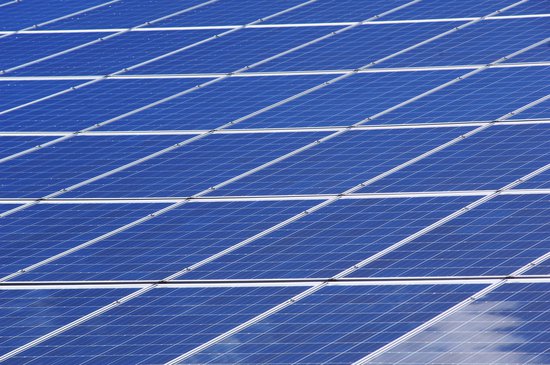Why are smart grids so essential to the future of power in India – and what kind of solutions can enable them to deliver maximum value?
As a global energy and water knowledge practitioner, Enzen is driving innovation in India’s smart grid sector. Our expert Deven Patel, Head of Smart Grids, explains the challenges and opportunities involved.
The electrical power grid of today has become more complex, dynamic and diverse than ever. The forces of decarbonisation, decentralisation and digitisation have increased the number of renewable energy sources like wind and solar, plus enabled growth in distributed generation, microgrids, energy storage and electric vehicles (EVs).
Despite the changes, the key to any electrical power grid remains the same: balancing the generation and loads, maintaining the system’s stability and ensuring its resilience to dynamic variations. In India, which has the world’s third largest power generation capability and its largest synchronous interconnected grid, what specific challenges does this transformation create?

Challenges and opportunities
At present, the total power generation installed capacity in India is ~360 GW, comprising ~37 GW of wind and ~31 GW of solar. There will be accelerated focus on renewables as the country strives to meet the government’s ambitious goals of 100 GW of solar and 75 GW of wind by 2022.
Meanwhile, there has been renewed focus on transmission grid stability since the 2012 blackout. Wide Area Measurement Systems are evolving to study the situational awareness of the grid and predict any instabilities ahead of time. New complexities in technical and business transactions are expected to emerge thanks to the increased deregulation of the distribution grid. And there are also programmes to replace consumers’ existing meters with smart meters and policy ambitions to sell only electric vehicles after 2030.
So how will such trends and expectations impact India’s energy infrastructure and market? As more wind and solar is connected to the grid, the intermittent nature of these sources creates higher uncertainty. This requires new fast-acting load balancing mechanisms, grid-level energy storage and active network management to help manage this new dynamic and ensure grid stability.
EV charging happens in different locations too. As more EVs are integrated into the system, predicting the load behaviour and proactively taking measures to ensure grid stability and power quality become critical.
As the costs of solar and battery storage decrease, hybrid distributed power is set to boom in India, potentially supported by policies that enable the purchase and trading of excess power. Moreover, the development of Low-Voltage Direct Current will further facilitate the use of power generated by solar panels or small wind turbines in remote locations, improving energy efficiency and reducing carbon emissions. Microgrids connecting the distributed energy resources will evolve rapidly and help the mission to provide uninterrupted power to all.
Faced with more consumer choice than ever, utilities will have to be competitive and creative to ensure they do not lose their customer base. At the same time, the electricity ecosystem is evolving to accommodate both energy consumers and prosumers, the latter being self-sufficient players in energy markets who can both buy and sell their energy.
The benefits of smart grids
All of the above means the development of smart grid technology is more critical than ever. By leveraging new data, communication, sensing and computing technologies, smart grids have the potential to make electricity grids more efficient, reliable and green.
Through advanced sensing and monitoring technologies, utilities can monitor and control the network in a timely manner. The ability of smart grids to automate data collection and analysis enables a more intelligent decision-making process, which in turn leads to optimised system performance and greater efficiency.
Smart grids can also provide the flexibility needed to integrate variable generation characteristic of wind and solar generators. And through their capacity for self-diagnosis and fault location, these grids can prevent power disturbances and breakdowns.
One of the main ways in which smart grids can deliver maximum impact is to ensure their interoperability across various systems. Across the world, several standards have been developed, or are being worked upon, in the areas of grid interconnection. These will ensure that renewables, electric vehicles, distributed power sources and the transmission and distribution of electricity can all work in a seamless, integrated way.
Such a dynamic new market creates unprecedented opportunities for multiple stakeholders, especially for new players with innovative new business models that help balance the energy mix, integrate new technologies and maintain physical and cyber security. Driving all this forward will be the rapid rise of digitisation in the form of the Internet of Things (IoT), Artificial Intelligence and Machine Learning.
As India evolves its smart grid infrastructure, it has an opportunity to leverage these new global standards and technologies to leapfrog more developed power systems elsewhere in the world and create a newer and more efficient electricity ecosystem.

An array of new solutions
What kind of smart grid technologies are we talking about specifically, and what advantages can they deliver? Here are some concepts designed to deliver positive outcomes:
- Effective network management: As the electricity ecosystem undergoes major transformation, a real-time decision-making IoT platforms can enable more productive operations and better utilisation of assets like substations, feeders and transformers.
- Asset management and life enhancement: New technologies can give utilities more complete and authentic information about their total network assets. For example, a digital platform can potentially migrate asset data from multiple sources, manage asset life cycles and asset maintenance, while integrating seamlessly with customer legacy systems and workforce and supply chain management systems. Also, with many assets in the existing grid becoming old and stressed, power failures become more likely. Through the real-time monitoring of parameters, data analytics solutions can assess and predict operational life, improving performance, increasing efficiency and reducing cost.
- Meter data insights: With the rapid deployment of smart meters, it’s imperative to analyse the data they generate and use this to take faster decisions that maintain grid resilience. Through robust Advanced Metering Infrastructure (AMI) systems, utilities can understand and predict customer behavior, and deploy Peak Load Management algorithms to handle unexpected peaks by demand response programs.
- Revenue enhancement and protection: Similar AMI systems can understand and predict customer behavior and integrate this knowledge with the billing system to produce error-free energy bills on time. The outcome is greater efficiency, improved revenue through loss reduction, greater adaptability to future tariff and regulatory changes, effective planning and monitoring of cash flows and more accurate insight into day-to-day revenue operations.
- GIS-based advanced visualisation: Web-based Geographic Information Systems solutions can visualise the energy network and create a virtual world of all network assets and their surroundings. This will result in increased data accuracy and planning, improved predictions of events that may damage the network, more informed decisions on future network enhancements and more effective network management in general.
Leading the way
The Indian power industry is going through a tremendous transformation. Government policy, new technologies, greater capacity for energy storage and advances in digitisation are all creating opportunities to make the country’s grid more efficient and sustainable. Through advanced smart grid solutions, the industry can not only integrate renewables and EVs into the grid, but make transmission and distribution in general more stable and dynamic, as well as maximise the lifecycle and effectiveness of the grid’s assets. This makes India ideally placed to leapfrog other nations and become a leader in providing cleaner, greener, more efficient and more affordable energy to its people.
This article was written by Enzen expert Deven Patel, Head of Smart Grids, and was published in the January 2020 issue of Energetica India magazine.